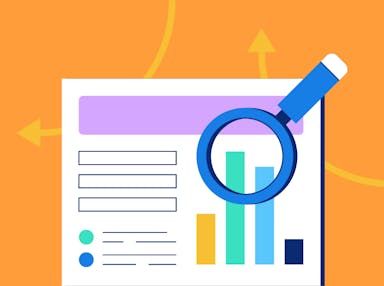
Risk Management in Healthcare: How to Build Organizational Resilience
Emily Bonnie
Senior Content Marketing Manager
Rob Gutierrez
Senior Cybersecurity and Compliance Manager, CISA, CCSK, CMMC RP
The Department of Health and Human Services (HHS) reported 725 healthcare data breaches in 2023, with over 133 million health records exposed.
As healthcare organizations are confronted with an increasingly complex range of internal and external risks, comprehensive and proactive risk management strategies become mission-critical.
What are the main types of risk healthcare organizations face, and what effective risk management practices can risk professionals use to identify threats and mitigate vulnerabilities? Below, we break down the fundamentals of enterprise risk management for healthcare systems.
7 Types of risk for healthcare organizations
Healthcare organizations face a multitude of risks that can impact their operations, financial stability, compliance posture, and quality of patient care. While each organization faces its own unique challenges, risks can be broadly grouped into the following main categories:

Patient safety and clinical risk
Patient care and safety are of paramount importance to healthcare organizations. Clinical risk involves anything that can cause adverse patient outcomes, including complications, misdiagnoses, faulty medical devices, incorrect treatments, or surgical and medical errors. An example would be the incorrect medication dosage being dispensed due to an error while transferring the medication order from the prescription to the patient’s pharmacy record.
Clinical risk management requires implementing stringent quality controls, adhering to treatment protocols, and ongoing staff training.
Ways to manage clinical risk:
- Evidence-based practices: Use treatments and care protocols that are backed by solid clinical research to ensure patient safety and care quality.
- Patient safety initiatives: Programs like infection control, fall prevention, and medication safety minimize the risk of adverse events.
- Personnel training and ongoing education: Ensure that all healthcare providers are current on the latest clinical guidelines, techniques, and technologies and have access to regular training.
Operational risk
This type of risk affects the day-to-day operations needed to deliver quality healthcare services, including supply chain disruptions, infrastructure failures (like power outages or IT system crashes), and inadequate staffing. For example, a failure in the EHR system results in significant downtime, leading to delays in accessing patient records and administering treatment.
Effective operational risk management often requires proactive contingency planning and operational resilience measures.
Ways to manage operational risk:
- Disaster preparedness and recovery planning: Develop and regularly update plans for natural disasters, pandemics, cyber attacks, and other emergencies.
- Supply chain management: Diversify suppliers and maintain adequate stockpiles of essential supplies to prevent shortages.
- Facility maintenance and safety: Regularly review and update infrastructure to ensure safety and regulatory compliance.
Financial risk
Financial operations such as billing processes, vendor contracts, healthcare reimbursement models, fluctuations in patient volume, increases in operational costs, and regulatory fines for non-compliance issues, can all carry significant risk. For example, lower than expected patient volume can affect an organization’s ability to pay fixed costs such as salaries, facility maintenance, and utilities, leading to increases in the per-unit cost of care.
Financial risk management involves strategic financial planning, regular internal audits, and efficient revenue cycle management.
Ways to manage financial risk:
- Diversified revenue streams: Exploring varied revenue sources, such as different payer contracts or offering new services, to reduce dependency on a single income source.
- Efficient billing practices: Streamline billing systems to maximize bottom line revenue and reduce the risk of denied claims.
- Cost management and control: Regularly reviewing expenses and implementing cost-saving measures without compromising patient care quality. Ensure appropriate personnel responsible for company financials.
Regulatory and compliance risk
The healthcare industry is highly regulated. Failing to adhere to applicable laws and regulations such as HIPAA, required billing practices, and healthcare standards can result in legal penalties, loss of licenses, and reputational damage.
Say an organization finds itself under audit for HIPAA violations following a significant data breach. In addition to regulatory fines, the organization may be impacted by breach notification costs, loss of patient trust, reputational damage, and operational disruptions.
Managing this risk requires ongoing training, strong data privacy and compliance programs, and regular internal compliance audits.
Ways to manage regulatory and compliance risk:
- Compliance programs: Establishing comprehensive compliance programs that cover all regulatory requirements relevant to the healthcare organization. This includes policies and procedures which ensure personnel follow compliance programs.
- Regular audits and security assessments: Conducting internal and external audits to ensure compliance with legal and regulatory requirements.
- Staff training: Keeping staff informed and educated about data privacy best practices, common attack vectors, compliance requirements, legal obligations, and ethical standards.
Strategic risk
This encompasses risks that affect the long-term goals and strategies of the healthcare organization. It includes risks related to changes in healthcare policies, market competition, technological advancements, and shifts in patient demographics.
Strategic risks can be more difficult to identify and measure. For example, take recent shifts to telehealth, health apps, and other digital platforms. Organizations that fall behind these shifts may lose patients who are looking for more flexible and accessible healthcare services. Addressing strategic risk in healthcare requires organizations to be forward-thinking and adaptable in improving patient care.
Ways to manage strategic risk:
- Strategic planning: Aligning long-term organizational goals with the changing healthcare landscape to stay competitive and relevant.
- Market analysis and adaptation: Continuously analyzing market trends, patient needs, and competitor strategies to adapt services accordingly.
- Investment in innovation: Investing in new technologies, research, and development to improve patient care and operational efficiency.
Cybersecurity and data privacy risk
With the increasing digitization of healthcare records, cybersecurity risks such as data breaches, ransomware attacks, and other unauthorized access to patient information are a critical concern.
Take the recent ransomware attack against Change Healthcare as an example. The catastrophic attack led to significant failures across the organization. Patients struggled to access timely care and prescribed medications. Plus the disruptions of billions of claims payments threatened the ability of affiliated hospitals to process payroll and acquire necessary supplies. Although Change Healthcare reportedly paid a $22 million ransom following the February 2024 attack, they are allegedly facing a second ransom demand over 4 TB of stolen PII.
Protecting against these risks requires watertight IT security controls, regular security audits, and staff training in cybersecurity best practices.
Ways to manage cybersecurity risk:
- Robust IT security measures: Implementing strong cybersecurity controls, such as firewalls, encryption, and multi-factor authentication.
- Regular security training for personnel: Educating staff about phishing, social engineering, and other cybersecurity threats.
- Data privacy policies: Putting strict controls and policies in place for accessing and sharing patient data to comply with laws like HIPAA and ensuring personnel understand and follow these policies.
Recommended reading

How to Do an Internal Audit + Security Audit Checklist
Reputational risk
Healthcare organizations must also consider the risk to their reputation, which can be damaged by negative patient outcomes, data breaches, and regulatory non-compliance. For example, a high-profile malpractice case can result in loss of patient trust, decreased patient volume, and significant legal costs.
Reputation management involves proactive communication strategies, high-quality patient care, and effective response plans for potential crises.
Ways to manage reputational risk:
- Patient satisfaction monitoring: Regularly monitor patient satisfaction and quality of care indicators to proactively identify and address potential issues.
- Crisis communication planning: Develop plans for communicating effectively with the public and stakeholders during adverse events.
- Community engagement: Actively participate in community activities and health promotion to build a positive reputation.
Each of these risk categories requires different strategies to manage them effectively. In the next section, we’ll walk through several common risk management strategies healthcare organizations and risk professionals use to identify, measure, mitigate, and monitor risks.
Healthcare risk management strategies
Risk professionals use a variety of methodologies and techniques to identify, assess, mitigate, and monitor risks based on their organization's specific objectives, the nature of the risks involved, regulatory requirements, and available data.
Here are several key risk management methodologies commonly used in the healthcare sector:
1. Healthcare Failure Mode and Effects Analysis (HFMEA)
Healthcare Failure Mode and Effects Analysis (HFMEA) is a proactive way to evaluate specific healthcare processes to identify where they might fail and the potential impact of that failure.
Healthcare organizations can use FMEA by creating detailed flowcharts for critical processes, such as medication administration, patient handoffs, or surgical processes. Risk teams can then identify steps where the process could fail, such as data entry errors, treatment delays, equipment failures, miscommunications between staff members, and so on.
For each failure mode, identify underlying causes (such as environmental issues or human error) and potential impact on aspects like patient care, regulatory compliance, etc. Assign each failure mode a score from 1-10 for severity of impact, probability of occurrence, and likelihood of detection.
A risk priority number is then calculated using this formula:

Based on the RPN, prioritize risks and focus mitigation efforts on those with the highest scores.
Using HFEMA effectively requires involvement from a range of stakeholders across disciplines and organizational levels to get a complete view of processes. It also requires detailed documentation of the HFEMA process and rationale for determining failure modes and ratings.
2. Root Cause Analysis (RCA)
Even with the most stringent protocols, adverse events may still occur. Root cause analysis is used to discover why a risk event (or near miss) happened so organizations can better understand underlying causes and prevent similar events in the future.
RCA digs deep to uncover the fundamental issues within an organization’s processes, systems, designs, or culture that allowed the adverse event to happen. It’s an objective, fact-based approach that requires teams to collect detailed information about the event
— not to assign blame, but to gain insight into what happened and why. This often involves reviewing records, interviewing staff, and observing processes to reconstruct a detailed timeline of events and identify where processes may have deviated or lines of communication broken down.
Teams then look for different factors that directly contributed to the event, such as inadequate training, equipment malfunction, lapses in protocols, etc. They may use tools like fishbone diagrams or fault tree analysis to look past superficial errors and dive deeper into systemic issues that need to be addressed, such as weaknesses in policies or procedures.
Using RCA for healthcare risk management requires openness and full participation from everyone involved, so it’s essential that personnel feel confident that they won’t be blamed. It’s also essential that organizational leaders and key stakeholders are invested in the process and committed to implementing any necessary changes.
3. Risk register
A risk register is used to identify, prioritize, and monitor potential risks. It can be an effective tool for healthcare organizations to track risks, allocate resources effectively, and monitor their risk landscape over time.
A risk register typically includes the following elements for each risk:
- Risk ID: A unique identifier for each risk.
- Risk owner: The individual or department responsible for monitoring the risk and implementing mitigation strategies.
- Risk category: Classification of the risk (e.g., clinical, operational, financial, strategic, compliance).
- Risk description: A clear description of the risk, including what could happen and why.
- Likelihood: An estimation of how likely it is that the risk will occur.
- Impact: The potential severity of the risk's consequences on the organization or patient care.
- Risk score: Often calculated by multiplying the likelihood by the impact, providing a quantifiable measure of the risk's overall severity.
- Risk treatment: Specifies what your organization will do to manage identified risks. Typical risk treatment options include:
-Avoid: Adapt business practices to avoid the risk altogether
-Reduce: Implement security controls to reduce the likelihood or impact of the risk
-Transfer: Shift risk to a third party, typically through insurance or outsourcing
-Accept: Accept the risk, usually because the cost of mitigating it outweighs the potential benefit
- Mitigation actions: Controls, processes, or measures that can be taken to reduce or eliminate the risk. These can also be referred to as compensating controls.
- Status: Current status of the risk (e.g., identified, being assessed, controls applied, closed).
- Review date: When the risk will next be reviewed to assess any changes in likelihood, impact, or effectiveness of mitigation strategies.

Qualitative and quantitative scales in Secureframe risk registers
To use a risk register, risk teams use a completed risk assessment to catalog identified risks. A risk matrix can be applied to the risk register to visualize high-priority risks.
Risk registers are living documents and should be frequently reviewed and updated. Key stakeholders should be able to access the risk register and encourage open communication in reporting new or potential risks.
Recommended reading

How to Create a Risk Register + Template
4. Monte Carlo Simulations
Monte Carlo simulations are statistical models that use multiple variables to account for the inherent uncertainty in predicting risk events.
Risk officers can use Monte Carlo simulations to model different risk scenarios, such as predicting patient demand, forecasting different financial scenarios, modeling patient care processes, and defining resource allocation. By assessing the likelihood of different outcomes of the same scenario, healthcare administrators can make more informed decisions about managing risk and optimizing processes.
To use Monte Carlo simulations, healthcare organizations must start by clearly defining the risk scenario and all of the variables that could affect its outcome. For example, patient arrival dates, treatment times, complication rates, treatment costs, etc. Then, quantify each input by determining its probability. Teams can then use a simulation model (such as this Monte Carlo simulation calculator or even ChatGPT) to run different simulations and create a range of possible outcomes.
Effective Monte Carlo simulations depend on clean, up-to-date data inputs. It also requires input from stakeholders across the organization to ensure that it addresses the right questions and that its findings are actionable.
5. SWOT analysis
SWOT analysis (Strengths, Weaknesses, Opportunities, Threats) is a strategic planning tool used to identify and analyze the internal and external factors that can impact an organization's objectives. In healthcare, SWOT analysis can help organizations assess their performance, identify strategic opportunities, and recognize external threats.
- Strengths: Internal attributes and resources that support a successful outcome. In healthcare, this could include a strong reputation, specialized medical expertise, advanced technology, or efficient processes.
- Weaknesses: Internal attributes and resources that work against a successful outcome. This might involve limited resources, staffing issues, outdated technology, or process inefficiencies.
- Opportunities: External conditions that could contribute to the organization's success. This could include emerging health trends, policy changes, technological advancements, or unmet community health needs.
- Threats: External conditions that could damage the organization's performance. Threats might include regulatory changes, increasing competition, financial pressures, or pandemics.
SWOT analysis allows risk officers to develop risk management strategies that leverage strengths and opportunities to improve the organization’s position while creating practical plans to address weaknesses and mitigate threats.
To help quantify threats and opportunities, SWOT analysis should involve assigning key performance indicators to monitor and adjust strategies.
6. PESTLE analysis
While many risks come from internal factors, PESTLE analysis helps organizations assess external risks that arise from Political, Economic, Social, Technological, Legal, and Environmental factors.
- Political: Government policies, political stability or instability, public health policies, and government funding for healthcare services.
- Economic: Economic trends, healthcare funding and reimbursement models, patient affordability, and overall economic health that affect healthcare spending.
- Social: Demographic changes, patient expectations, lifestyle trends, and public health issues that might affect demand for healthcare services.
- Technological: Advances in medical technology, digital health innovations, and information technology systems that impact healthcare delivery and operations.
- Legal: Healthcare regulations, compliance requirements, patient privacy laws (like HIPAA in the U.S.), and employment laws.
- Environmental: Environmental health risks, sustainability practices within healthcare, and the impact of environmental policies on healthcare operations.
Teams review industry reports, analyze market trends, consult legal databases, and assess societal health trends to identify specific risks or opportunities and their potential impact on the organization.
PESTLE analysis helps healthcare organizations understand the broader context in which they operate, including regulatory changes, technological advancements, and socioeconomic trends that could affect healthcare delivery and operations. It also allows administrators to make more informed decisions as they navigate the evolving healthcare landscape.
How to develop a healthcare risk management plan
An effective risk management plan is not a static document but a living framework for identifying, assessing, and mitigating risks across a constantly changing landscape. This framework should be integrated into the organization's daily processes and decision-making as a key operational component.
Developing a risk management plan for your healthcare organization is a critical process to ensure patient safety, protect healthcare workers, and safeguard your organization's assets and reputation. Here's a step-by-step guide to help you develop a comprehensive risk management plan:
1. Define objectives
Start by clearly articulating the goals of your risk management plan, aligning with your organization's overall objectives and patient care priorities. Give careful consideration to both internal factors (such as staff capabilities and existing processes) and external factors (including regulatory requirements and external threats) that could impact your organization.
2. Conduct a risk assessment
Identify potential risks including clinical, operational, financial, strategic, compliance, and reputational risks. Consult stakeholders from various departments (clinical staff, administration, IT, etc.) and levels to get a comprehensive understanding of potential risks across the organization. Then analyze identified risks and assign priority based on potential likelihood and impact.
3. Treat and mitigate risk
Determine treatment for each risk. Which risks will you accept, and which will you actively mitigate? For each high-priority risk, create a mitigation plan that defines specific actions, risk owners, timelines, and required resources or dependencies. Specific actions could include technical or administrative security controls, policy changes, staff training, investing in new technology, or purchasing insurance.
4. Communicate and implement
Roll out the risk management plan across your organization, including personnel and external partners such as vendors and suppliers when necessary. Encourage personnel to ask questions and report new or potential risks to the risk management team.
You’ll also need to establish a process for regularly monitoring risks and evaluating whether your mitigation strategies are effective. This might include routine safety audits, risk assessments, and incident reporting systems. As you monitor success, use lessons learned to improve and refine your strategies.
5. Maintain documentation
Keep detailed records of the risk management process, including risk assessments, decisions made, and rationale for those decisions, so that you can report to senior management and any external auditing bodies.
Developing a risk management plan is an iterative process. It requires commitment from all levels of the organization, from frontline staff to top management. By systematically following these steps, you can create a dynamic risk management plan that evolves with your healthcare organization's needs and the changing healthcare landscape.
Healthcare risk management certification programs
Obtaining a certification in healthcare risk management can be a valuable way to gain another level of expertise and enhance your organization’s risk management program.
These certifications are widely known and respected for healthcare risk management:
- Certified Professional in Healthcare Risk Management (CPHRM) - American Hospital Association (AHA)
CPHRM is designed for healthcare professionals who are responsible for preventing and reducing losses to both people and organizations. Eligibility for the certification exam is based on degree and professional experience requirements. The American Society for Health Care Risk Management (ASHRM) offers the CPHRM exam and prep courses. - Certified Materials & Resource Professional (CMRP) - Association for Health Care Resource & Materials Management
CMRP certification demonstrates expertise in the field of healthcare material management, ensuring medical facilities are properly stocked with supplies and equipment. - Certified Healthcare Safety Professional (CHSP) - Board of Certified Hazard Control Management (BCHCM)
The CHSP is designed for professionals who handle safety, security, and risk management responsibilities in healthcare settings. - Healthcare Compliance Certification - Healthcare Compliance Association (HCCA)
Compliance plays a significant role in risk mitigation in healthcare. This certification provides healthcare professionals with knowledge of relevant regulations and expertise in compliance processes so they can understand and address legal and compliance obligations.
Recommended reading

Risk Management Training: 25+ Top Certifications and Online Courses to Enhance Your Expertise
Harness AI for efficient and effective risk management
Secureframe’s end-to-end risk management solution provides powerful features to manage healthcare risk effectively and efficiently.
- Automatically assess and treat risks with Comply AI. The fully automated risk assessment workflow leverages AI to generate risk scores, treatment, residual risk, and justifications.
- Easily add and track risks with the risk library. Our risk library includes NIST risk scenarios for categories including IT, Fraud, Legal, Privacy, and Finance.
- Reduce compliance risk with Secureframe’s compliance automation. Easily create and maintain HIPAA-compliant privacy and security policies, conduct personnel training, track vendors/business associates with access to PHI, and continuously monitor your HIPAA safeguards.
- Link risks to controls and view history to coordinate risk management strategies with compliance requirements. Close any gaps in your risk management program and demonstrate the steps you’ve taken to strengthen your security and privacy posture over time.
To learn more about Secureframe’s powerful risk management capabilities, schedule a demo with a product expert.
Use trust to accelerate growth
FAQs
What is meant by secure by design?
Secure by design means that technology products are designed, built, tested, and maintained in a way that reduces the number of vulnerabilities that malicious cyber actors may use to gain access to devices, data, and connected infrastructure.
What is the main goal of healthcare risk management?
The main goal of risk management is to protect the organization, its stakeholders, and its assets from the negative impacts of various risks. This includes interventions against reputational and financial loss and promoting patient health and safety.
Why is risk management in healthcare important?
Risk management in healthcare is crucial due to the inherent complexities and uncertainties involved in delivering healthcare services. It plays a vital role in ensuring patient safety, enhancing care quality, maintaining financial stability, and protecting the organization's reputation.

Emily Bonnie
Senior Content Marketing Manager
Emily Bonnie is a seasoned digital marketing strategist with over ten years of experience creating content that attracts, engages, and converts for leading SaaS companies. At Secureframe, she helps demystify complex governance, risk, and compliance (GRC) topics, turning technical frameworks and regulations into accessible, actionable guidance. Her work aims to empower organizations of all sizes to strengthen their security posture, streamline compliance, and build lasting trust with customers.

Rob Gutierrez
Senior Cybersecurity and Compliance Manager, CISA, CCSK, CMMC RP
Rob Gutierrez is an information security leader with nearly a decade of experience in GRC, IT audit, cybersecurity, FedRAMP, cloud, and supply chain assessments. As a former auditor and security consultant, Rob performed and managed CMMC, FedRAMP, FISMA, and other security and regulatory audits. At Secureframe, he’s helped hundreds of customers achieve compliance with federal and commercial frameworks, including NIST 800-171, NIST 800-53, FedRAMP, CMMC, SOC 2, and ISO 27001.